YOU ARE LEARNING:
Uniform Acceleration

Uniform Acceleration
Distance and acceleration can be related to each other in a single equation.
What do you think uniform means?

So if an object has uniform acceleration, what does that mean?

What is this cyclist's acceleration?

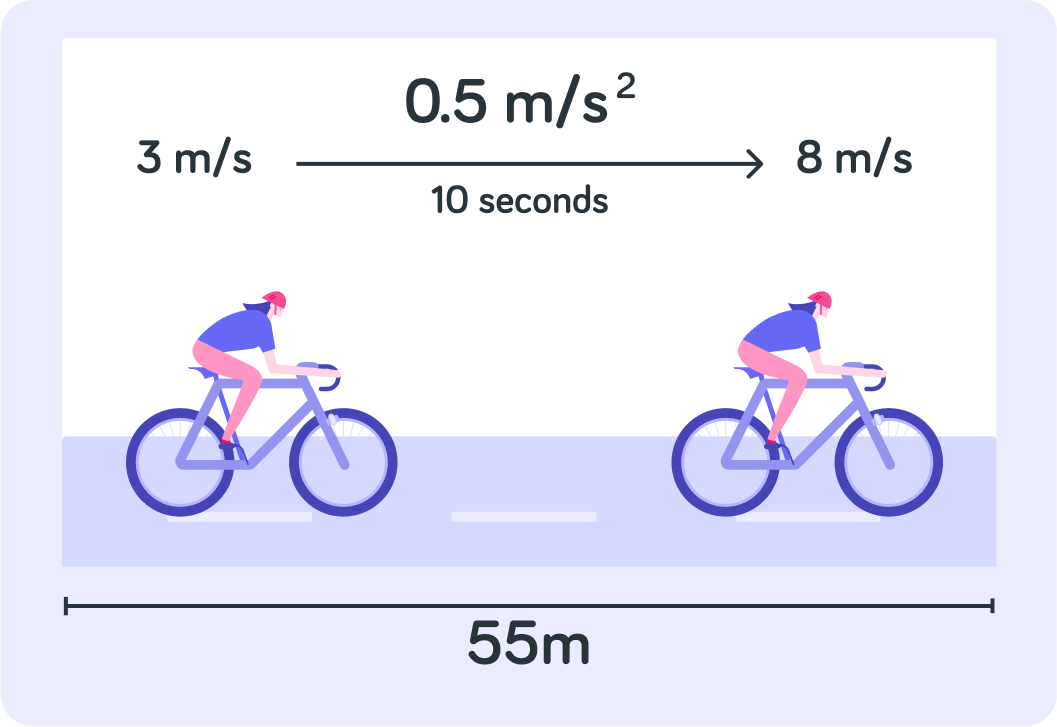
That means that the cyclist's velocity increases by 0.5 m/s every...


"Uniform acceleration" is the same as "constant acceleration"
For example, this cyclist's speed will accelerate by 0.5 m/s every second.

For uniform acceleration, we can use the following equation that links velocity, distance and acceleration.
v2−u2=2as
This lesson will teach you how and when to use this.
v2−u2=2as
First of all, with any equation, we have to define the variables. Starting with the most obvious one, what does a stand for?

The equation for acceleration that we've already looked at is a=tΔv. This can also be written like this a=tv−u. What do you think v and u stand for, respectively?

So far we've defined a as uniform acceleration, u as initial velocity and v as final velocity. What does that make s?

So we have a for uniform acceleration, u for initial velocity, v for final velocity and s for distance.
Let's now look at how to use this equation.
Calculating acceleration, a
With any question, the first thing you have to do is write down all the variables the question gives you. In this case, what variables do you know?

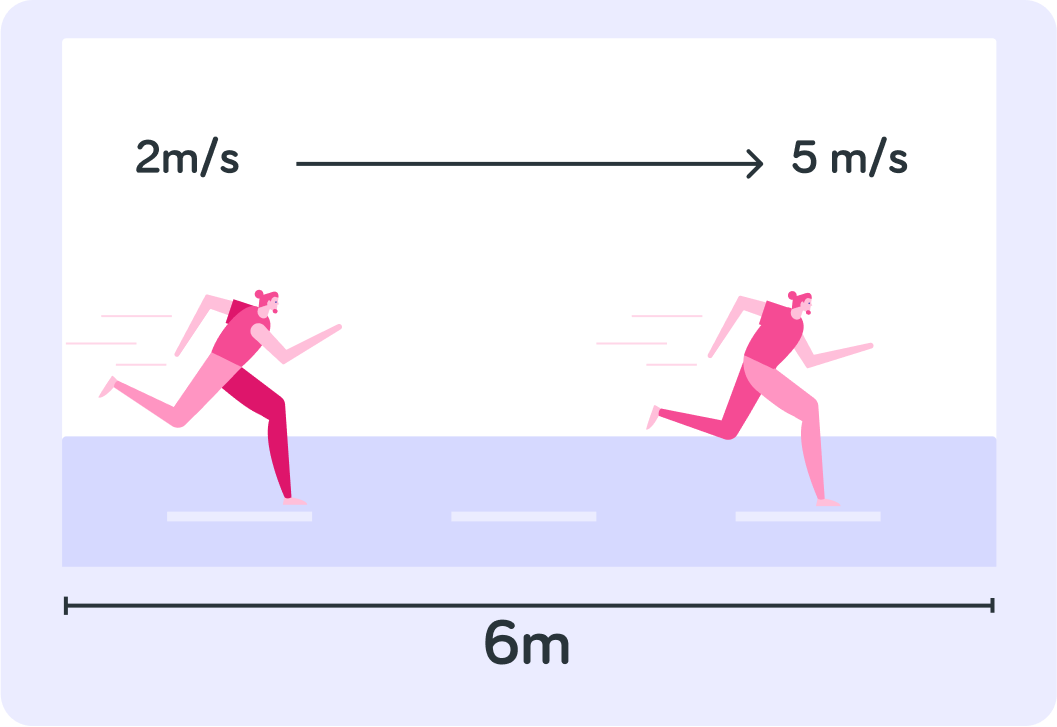
Ok, so now we have all of our variables defined.
u=2m/s
v=5m/s
s=6m
a=?

Now we need to rearrange our equation v2−u2=2as to make a the subject. What will this look like?


Great, now that we have all the information we need, calculate the acceleration using a=2sv2−u2.


Use a=2sv2−u2 to work out this car's acceleration. Give your answer to 2 decimal places.

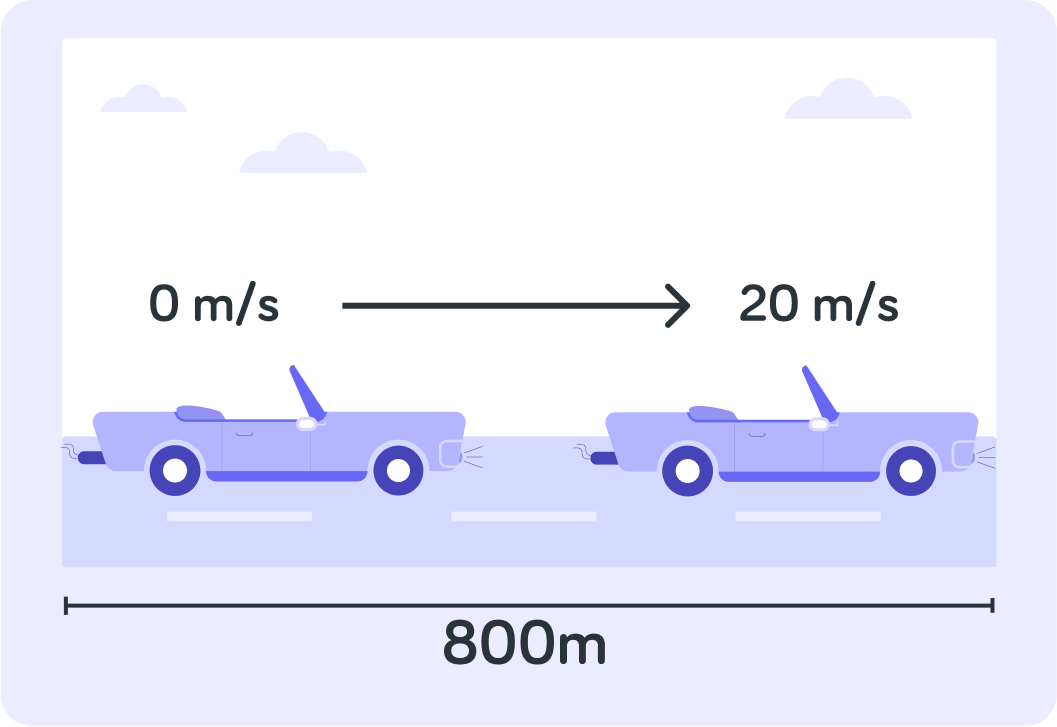
A runner starts a race and uniformly accelerates at 0.5m/s2 until she reaches a velocity of 3m/s.
What information is missing from the above statement?

We know that we are going to be asked to find the distance the runner ran. Write v2−u2=2as where s is the subject.

Calculate how far the runner travelled until she reached her final velocity.

Calculating the final velocity, v
What values are given in this picture?

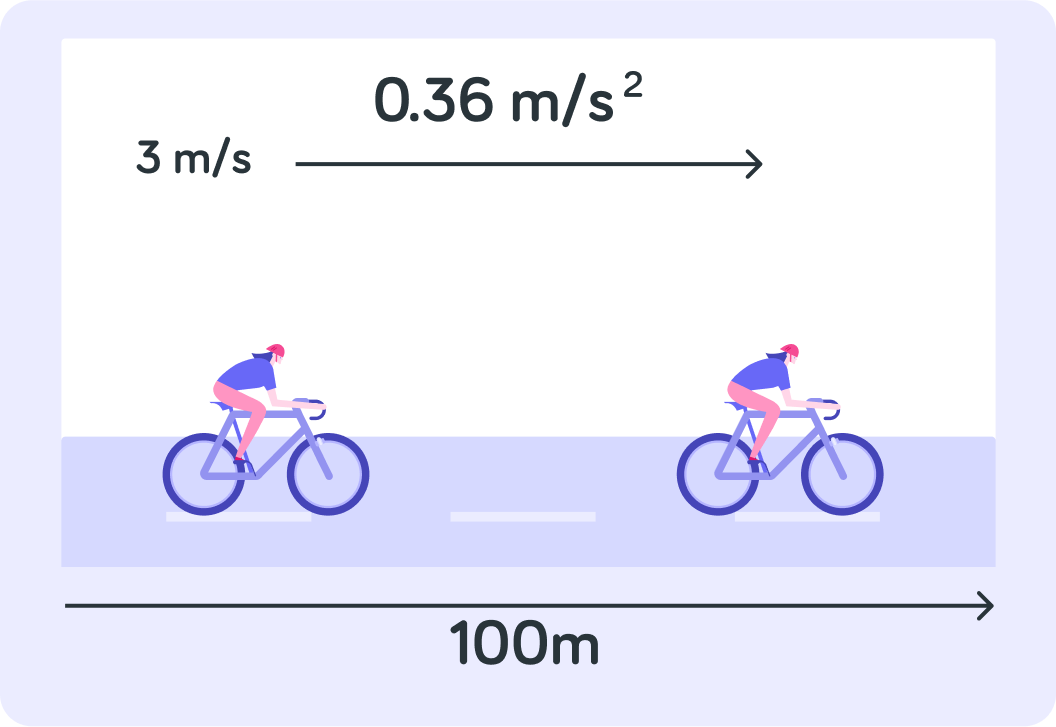
You can select multiple answers
So we are missing v. How do we rearrange v2−u2=2as to make the final velocity the subject?


Now use v2=u2+2as to work out v2 for this cyclist.


So v2=81 m/s. How do you work out the cyclist's final velocity, v then?


So you worked out this cyclists final velocity using ...
v=u2+2as
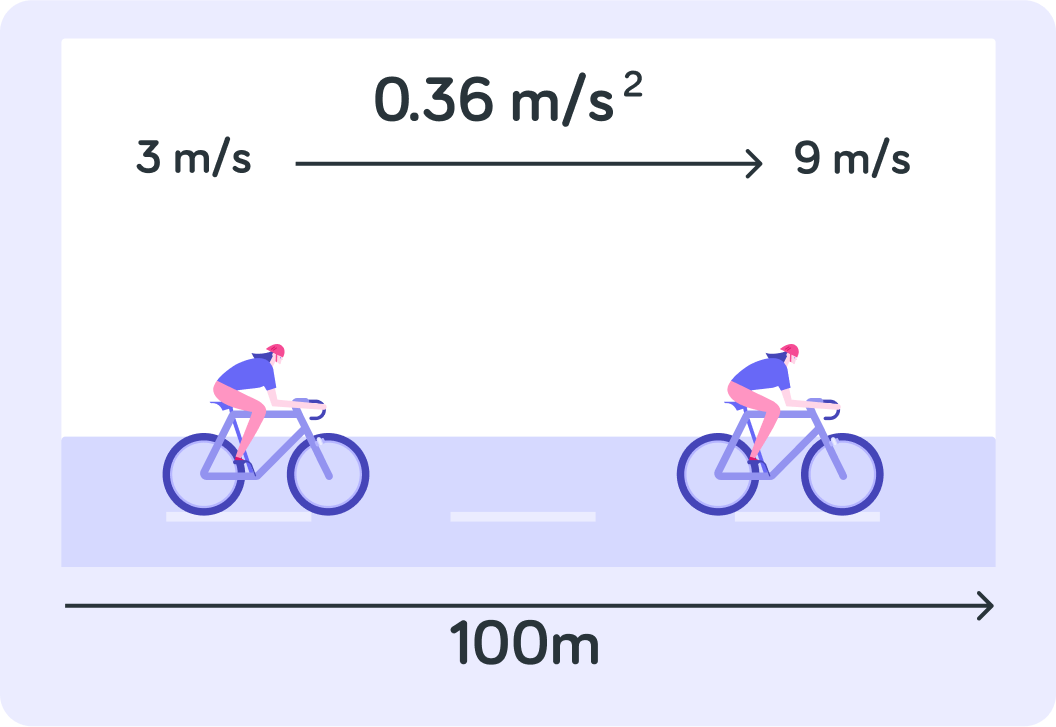
Use v=u2+2as to work out this train's final velocity.

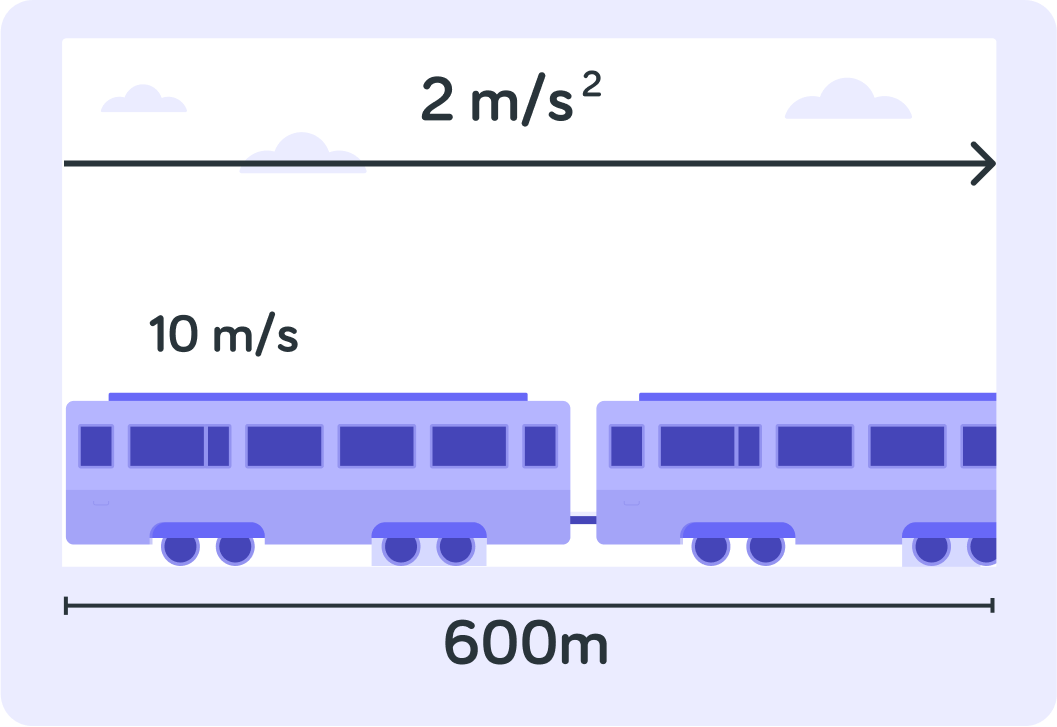
What is this person's final velocity?

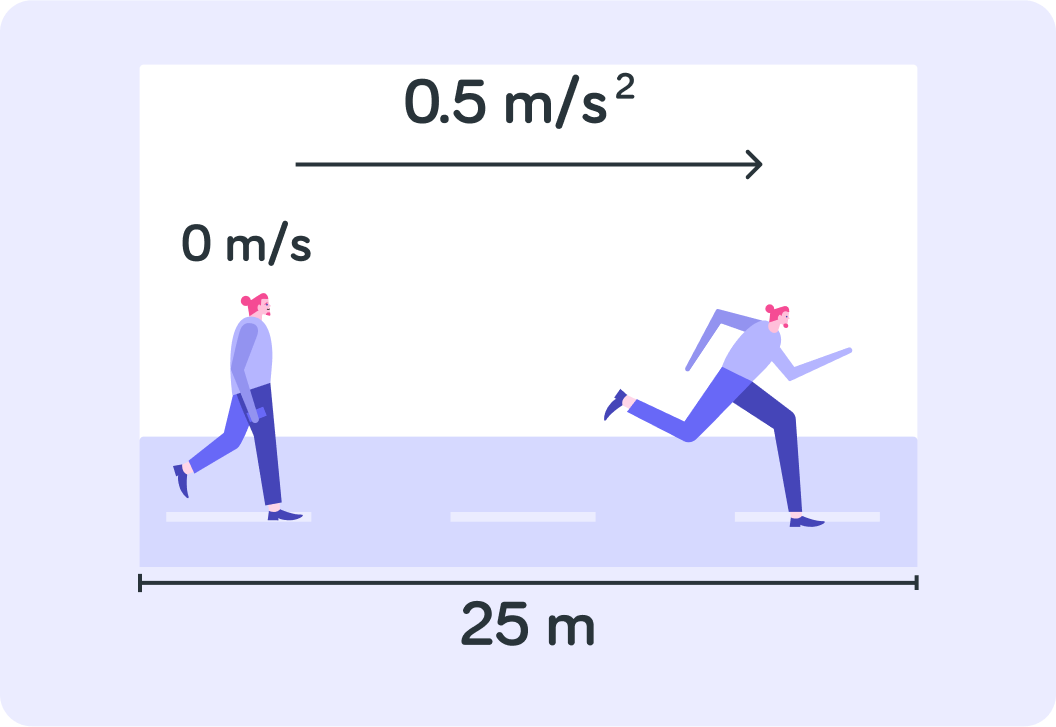
A bowling ball is dropped from a height of 5m and accelerates uniformly due to gravity at 10m/s2. It reaches a velocity of 10m/s right before it hits the ground. What was its initial velocity?

Summary!
An object that has uniform acceleration has constant change in velocity.
The equation v2−u2=2as can only be used for uniformly accelerated motion.

To calculate acceleration, a, we divide both sides by 2s to get...
a=2sv2−u2

To calculate distance, s, we divide both sides by 2a to get...
$s=\frac{v^2-u^2}{2a}$

To calculate the final velocity, v we +u2 to both sides and take the square-root to get...
v=u2+2as

To calculate the initial velocity, u, we rearrange to get...
u=v2−2as

